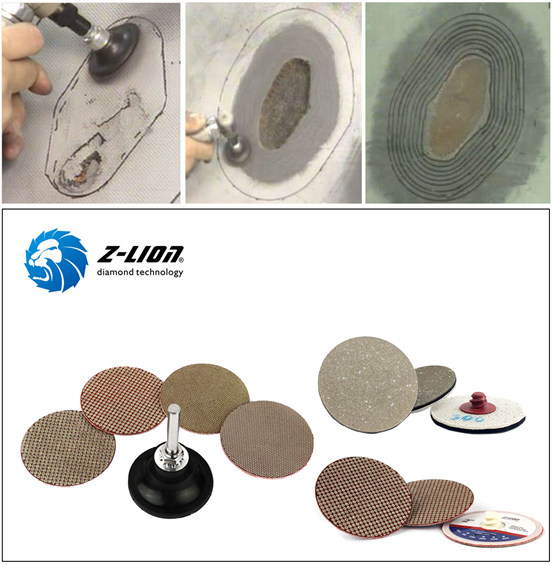Composites have numerous advantages compare with conventional materials. And one of the advantages is the ease and durability of repairs. Damaged composite parts might be replaced if lack of knowledge about repair. But actually composite parts are easier to repair than conventional materials. In this article we will provide a basic understanding of composite repairs.
Successful composite repairs allow us to extend the life of a part and save the cost of replacing composite part. There are three main principles that must be understood if you want to complete composite repairs successfully. They are Repairs Differ from the Original Part, Increased Surface Area Increases the Strength of Composite Repairs, Repairs Should Match your Original Part.
Repairs Differ from the Original Part.
The first principle about composite repair which needs to be understood is that structural repairs are made by a different process than the original piece. When a composite part is initially manufactured, its resin cures bonding both chemically and physically with the reinforcement fabric resulting in a single unit, regardless of the number or orientation of the plies of fabric. This is referred to as the primary structure or bond, and it is the strongest type of bond that can exist within a composite part.
Once a part is damaged, all repairs become secondary bonds attached to the original primary structure. This means all repairs are dependent upon physical bonding to the surface of the original primary structure. For this reason, fiberglass repairs rely upon the adhesive quality of their resin for their strength—the strength of physical bond to the primary structure. Because of this, the resin used for the repair should be just as strong as the resin used to fabricate the part. In fact, resins with strong adhesive properties are sometimes used for repairs.
Increased Surface Area Increases the Strength of Composite Repairs
Since fiberglass repairs depend upon surface adhesion (physical bonding) of the repair to the primary structure, increasing the surface area of the bond line will increase the strength and durability of the bond—and by extension the part or repair.
Typically, the method employed to increase the surface area is taper or scarf sanding. This type of sanding means the area next to the damage is sanded away gradually, generally resulting in approximately ½—¾ of an inch of area per ply of composite laminate. Scarf sanding is usually done with a high speed compressed air power sander and roloc sanding discs.
Since most composite structures are fairly thin, this is a gentle process. The size of the taper, relative to the thickness of the laminate, is expressed as a ratio. Generally, the stronger or more critical the repair needs to be, the larger the ratio. Structural repairs usually require a gentler taper, with a ratio of 20:1 up to 100:1.
An alternative method employed to increase surface area is step sanding. This procedure defines the size of the inner repair, then removes surrounding materials at a width of ½” per ply of the part, working towards the part surface. This results in a considerable growth of the repair surface and allows the fiber orientation to be evident in each step.
Both methods are acceptable for the majority of composite repairs, though most consider scarfing to be easier, and it’s generally considered better. Stepping results in abrupt edges and butt joints in each repaired ply. It is also hard to step sand without cutting through, potentially damaging the underlying plies.
Repairs Should Match your Original Part
While your composite repair is different than your original part, it is recommended that you duplicate the thickness, density, and ply orientation of the original laminate when making your repair. This will help to maintain the functionality of the part. More is not always better—in this case, if your repair is thicker than the original part, it will almost certainly be stiffer, regardless of the material in use. Introducing various strengths within a part can cause unintended stress points, eventually leading to material fatigue or failure. It is better to carefully replace every ply that has been removed in the damaged area with an identical material, placed in the same orientation when possible. This ply—for—ply replacement approach guarantees the repaired structure can withstand the same loads as the original, and that it will disperse loads as intended.
Post time: Apr-07-2022

